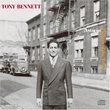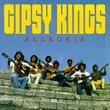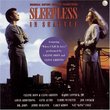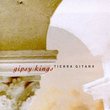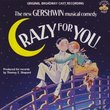| All Artists: Duke Ellington, Louis Armstrong, Artie Shaw, Benny Goodman, Paul Whiteman Orchestra, "Bix" Beiderbecke, Bing Crosby, Bessie Smith, Coleman Hawkins, Fletcher Henderson Title: Drivetime Jazz: Rhythms For The Road Members Wishing: 1 Total Copies: 0 Label: The Gift of Music Release Date: 2/2/2009 Album Type: Import Genres: Jazz, Pop Style: Easy Listening Number of Discs: 1 SwapaCD Credits: 1 UPC: 658592121728 |
Search - Duke Ellington, Louis Armstrong, Artie Shaw :: Drivetime Jazz: Rhythms For The Road
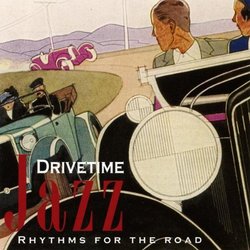 | Duke Ellington, Louis Armstrong, Artie Shaw Drivetime Jazz: Rhythms For The Road Genres: Jazz, Pop
Drivetime Jazz — Rhythms for the Road Sound the horn and clear the road! Cheery jazz classics to make your journey seem shorter - or to blow away the frustrations of the traffic jams and congestion of modern motoring. The j... more » |
Larger Image |
CD Details
Synopsis
Product Description
Drivetime Jazz
Rhythms for the Road Sound the horn and clear the road! Cheery jazz classics to make your journey seem shorter - or to blow away the frustrations of the traffic jams and congestion of modern motoring. The jazz greats are here: Armstrong and Hawkins, Bix and Benny, Bessie and the Duke, with the rhythm you need for that drive! Our album of historic recordings opens with 'the indispensible' Edward Kennedy Ellington - called 'Duke' by his friends on account of his aristocratic manner and elegance of dress - whose recording career began in 1927. He was already a mature artist by then. 'The Washington wobble' was recorded at one of the earliest of his recording sessions, a hallmark of which was the special bass sound of his band: present and full, and achieved simply by moving the bassist (Wellman Braud) closer to the microphone! The band's trumpeter, 'Bubber' Miley had been playing regularly with the Duke for more than 3 years by then, primarily in New York's Kentucky Club at 49th and Broadway. His artistic influence on the Duke is clear in recordings such as 'Doing the voom voom'. Bessie Smith has one of the most striking jazz voices of all time: it's not pretty, but it packs a punch and her strong personality is very clear, aided by strong diction and immense clarity. Many of her recorded songs focus on a strong narrative with a solid blues rhythm, as she played to her technical strengths. 'Take me for a buggy ride' comes from her last recording session, made in New York in 1933. Paul Whiteman was often called the 'King of Jazz'. He worked with some of the best jazz musicians he could find: one of his skills was in putting great artists together in his famous orchestra. Around Christmas 1926 in Chicago, Whiteman signed up Bing Crosby. Early in the following year Bix Beiderbecke joined too, pleased to take up a place with Whiteman after other, smaller-scale musical ventures had folded. Bix and Bing hit it off from the start: 'One of the great thrills of my life, working with Bix - we both took our work seriously but we enjoyed it. I used to try and sing like he playedhe was a great talent, with a superb ear and real styleit was one of the best things Whiteman did, signing him'. Louis Armstrong was also already a star in the 1920s and was a major act at the Cotton Club in the 1930s. He was continually bothered in his early days by legal and financial wrangles which were not resolved until he found the right agent, Joe Glaser, who straightened out the mess and started to put Armstrong together with other fine musicians. Armstrong played regularly from the late 40s with Jack Teagarden as part of the 'All Stars' group. He played the trumpet and sang with that famous gravelly voice. Coleman Hawkins is often acclaimed as the 'inventor of the tenor sax'. His distinctive staccato style earned him many plaudits, but he could also play in a legato, melodious way too, like an instrumental 'singer'. Artie Shaw was a professional musician by the age of 15: when he made 'Snug as a bug in a rug' he was still only in his twenties. Benny Goodman studied classical clarinet in Chicago as a boy before crossing decidedly over into the world of jazz, although he made exactly the opposite move later in life and worked with some of the greatest classical composers of the day such as Bernstein and Copland. He worked with Armstrong for a while, although (perhaps because of his classical leanings) he rejected the more showy aspects of Armstrong's stage performances.
Rhythms for the Road Sound the horn and clear the road! Cheery jazz classics to make your journey seem shorter - or to blow away the frustrations of the traffic jams and congestion of modern motoring. The jazz greats are here: Armstrong and Hawkins, Bix and Benny, Bessie and the Duke, with the rhythm you need for that drive! Our album of historic recordings opens with 'the indispensible' Edward Kennedy Ellington - called 'Duke' by his friends on account of his aristocratic manner and elegance of dress - whose recording career began in 1927. He was already a mature artist by then. 'The Washington wobble' was recorded at one of the earliest of his recording sessions, a hallmark of which was the special bass sound of his band: present and full, and achieved simply by moving the bassist (Wellman Braud) closer to the microphone! The band's trumpeter, 'Bubber' Miley had been playing regularly with the Duke for more than 3 years by then, primarily in New York's Kentucky Club at 49th and Broadway. His artistic influence on the Duke is clear in recordings such as 'Doing the voom voom'. Bessie Smith has one of the most striking jazz voices of all time: it's not pretty, but it packs a punch and her strong personality is very clear, aided by strong diction and immense clarity. Many of her recorded songs focus on a strong narrative with a solid blues rhythm, as she played to her technical strengths. 'Take me for a buggy ride' comes from her last recording session, made in New York in 1933. Paul Whiteman was often called the 'King of Jazz'. He worked with some of the best jazz musicians he could find: one of his skills was in putting great artists together in his famous orchestra. Around Christmas 1926 in Chicago, Whiteman signed up Bing Crosby. Early in the following year Bix Beiderbecke joined too, pleased to take up a place with Whiteman after other, smaller-scale musical ventures had folded. Bix and Bing hit it off from the start: 'One of the great thrills of my life, working with Bix - we both took our work seriously but we enjoyed it. I used to try and sing like he playedhe was a great talent, with a superb ear and real styleit was one of the best things Whiteman did, signing him'. Louis Armstrong was also already a star in the 1920s and was a major act at the Cotton Club in the 1930s. He was continually bothered in his early days by legal and financial wrangles which were not resolved until he found the right agent, Joe Glaser, who straightened out the mess and started to put Armstrong together with other fine musicians. Armstrong played regularly from the late 40s with Jack Teagarden as part of the 'All Stars' group. He played the trumpet and sang with that famous gravelly voice. Coleman Hawkins is often acclaimed as the 'inventor of the tenor sax'. His distinctive staccato style earned him many plaudits, but he could also play in a legato, melodious way too, like an instrumental 'singer'. Artie Shaw was a professional musician by the age of 15: when he made 'Snug as a bug in a rug' he was still only in his twenties. Benny Goodman studied classical clarinet in Chicago as a boy before crossing decidedly over into the world of jazz, although he made exactly the opposite move later in life and worked with some of the greatest classical composers of the day such as Bernstein and Copland. He worked with Armstrong for a while, although (perhaps because of his classical leanings) he rejected the more showy aspects of Armstrong's stage performances.
Similarly Requested CDs
| Tony Bennett Astoria Genres: Jazz, Pop, Broadway & Vocalists Label: Sony | |
| Gipsy Kings Allegria Genres: International Music, Jazz, Pop, Latin Music Label: Nonesuch | |
| Gipsy Kings Tierra Gitana Genres: International Music, Jazz, Pop, Latin Music Label: Nonesuch | |

 Track Listings (21) - Disc #1
Track Listings (21) - Disc #1